For those struggling with substance abuse, mental illness, and/or trauma, lasting help can be found inside the supportive, healing structure of a high-quality women’s IOP.
Designed to bring a high saturation of treatment hours within the most flexible structure possible, intensive outpatient programs are made for women who want to or need to keep one hand in their existing life responsibilities, while still receiving a high level of healing care.
Here at Villa Kali Ma, we are big believers in IOP as a functional model for women on the healing path. IOPS is for women who need a short phase of high-intensity treatment to bring their hearts, minds, and bodies back into sustainable balance.
While we certainly would wish a healing stay in our retreat-like residential rehabilitation facility for any woman who wants and needs it, we recognize the option isn’t always possible or necessary, depending on each woman’s needs and life situation.
In this blog post, we’ll explore the many benefits of Intensive Outpatient Programs as we see them, through our holistic, female-centric lens. As always, we’ll steer the conversation towards the many ways, clinical and alternative, that women can get free from the weighty burdens of addiction, mental illness, and trauma.
Why choose an IOP for women?
The key reason women participate in an Intensive Outpatient Program like the one we have at Villa Kali Ma is to undergo a short-term, but very powerful course of therapeutic treatments.
The goal of an IOP program is to halt a downward spiral and gently but firmly reverse it, so that our life begins to move outwards and upwards again, towards health, healing, and all that’s beneficial in life.
The restoration to stability and health is accomplished through immersion in a program packed with a high number of treatment hours, involving multiple days a week for multiple hours.
IOP’s structured program of treatment hours – at least 9 hours a week, broken into segments occurring on select days of the week – comprises multiple kinds of therapies, each of which addresses a different facet of a woman’s life.
Some therapies we use in our IOP at Villa Kali Ma, like Eye Movement Desensitization and Reprocessing (EMDR), Brainspotting, and Tension and Release Exercises, are primarily directed towards helping a woman feel safe, secure, and capable in her body again.
Many women do not feel adequately safe to experience their own body sensations without tensing up or cutting off from what they feel, living instead at the mercy of their amped-up or numbed-out nervous system states. Women who have this problem are not doing it on purpose – the struggle to experience regulation is not a choice, it is an automatic biological function that needs to be compassionately retrained with an appropriate therapy.
Other therapies, like Cognitive Behavioral Therapy, Acceptance and Commitment Therapy, Motivational Interviewing, and Mindfulness and Self-Compassion Therapy, help women safely develop greater awareness of the role that negative and positive thoughts have in their lives. These therapies empower women to make conscious choices about how they choose to look at themselves, others around them, and the world at large.
Some therapies, like Equine Therapy and other Nature-Based approaches, use nature and animals to help women recover deeply, at levels of being that have nothing to do with words. Other therapies and activities use creative expression, mindful movement, healing touch, spirituality, and imagination.
Finally, many groups, such as Dialectical Behavior Therapy, Relapse Prevention Planning, and Love and Relationships, coach practical skills for handling relationships, getting our needs met, opening our hearts again, and experiencing the juiciness of our emotional lives without fear of drowning in overwhelming sensations.
Intensive Outpatient Programs help women stabilize anything that has gotten out of control – problems like self-destructive behavior and substance abuse. They will also get at the inner heart of a woman’s subjective experience, to help her experience safety, containment, grounding, sanity, and good feelings again, inside her own skin.
Who can benefit from an IOP for women?

Intensive Outpatient Programs have powerful effects, provided women are able, ready, and willing to undergo a transformation process and change. Recovery is, in the end, an inside job, and the psyche can put up a powerful fight against treatment if a woman isn’t ready yet.
But if a woman is reasonably willing to surrender herself to a process of getting better, IOP can work wonders. Part of treatment is dedicated to the delicate dance of building up enough trust and safety internally, to open to greater and greater levels of healing, so you don’t need to be perfectly ready, just willing enough.
It’s not necessary to know how to recover (the IOP will guide you through it), but rather to feel an honest inner “yes” to the what of recovery. A good way to test your readiness for the what of recovery is to explore the following in your imagination:
Short Compassionate Inquiry on Readiness
Imagine you had a magic wand, which would give you anything you want. How do you feel about the following wish: Make me sober, healthy, happy, “all better”.
Would you make that wish, given the power to?
If your answer is a genuine yes, you’re willing enough. (If your answer was no, but you wanted it to be yes, the part of you that wants it to be yes is your starting point. You can pull on that thread to discover a more deep and genuine yes. Explore your no, too. Why not? What do you fear might happen, if you were sober, happy, healthy, “all better”? We can learn a lot from these answers).
Signs of Sufficient Change Readiness
Usually, when we are ready to change, certain qualities will be present with us.
Change readiness is generally signaled by:
-strong motivation to recover. We know why we want to get better, and for us, it’s a compelling reason.
-willingness to be accountable and to tell the truth. We are more interested in getting better than in saving face or pretending everything is ok.
-our actions show that we have made some steps towards healing and recovery. For example, if we ourselves reached out for help, told someone we love the truth about our true level of need, these are positive signs that change has begun within us.
-we have stopped fighting, resisting, managing, and controlling the change that needs to happen. A level of surrender, giving up and acceptance is usually palpable when we have decided to change. We are no longer in a bargaining or argumentative state about whether or not we need to. We are less defensive, a little more humble perhaps, and more quietly open to receive a new reality.
How Severe is My Situation?
In addition to readiness to change, there’s a question of how severe a woman’s case is. It’s not uncommon that a woman might need a higher level of care than Intensive Outpatient, in which case the intake specialist helping you will suggest that you should probably go into a medically supervised setting, such as an inpatient rehab, medical detox, or partial hospitalization program, these three being variations of treatment settings with round the clock supervision.
This is the case when a woman’s addiction has become a strongly medical issue, or when the interactions of mental health symptoms, psychiatric medicines, self-destructive behavior, and mood-altering substances are unpredictable and dangerous without supervision.
Some women won’t be able to stay sober if left unsupervised between treatment sessions. This isn’t personal, it’s the nature of addiction. For IOP to work, we need to be able to refrain from substance use throughout the course of treatment, even when exposed to triggers from our home and work life.
In general, if it is possible to take a pause from work and home environment, residential treatment is a strong, supportive option to consider before IOP. A retreat from one’s ordinary environment lends many kinds of protective and curative factors, a deeper level of safety, and release into the healing program which isn’t available if we are regularly revisiting our home and work environments.
That said, not everyone can take or afford a full pause from their life circumstances, and not everyone needs that higher level of care, in which case, IOP is the next best thing.
What are the benefits of IOP for women?
Intensive Outpatient Programs for women offer many benefits. Here are a few of them:
1. High Amount of Treatment Hours in a Relatively Short Period of Time
Women struggling with addiction, mental illness symptoms, and/or trauma need a high level of face-to-face hours per week, in order to stabilize their outer lives and inner worlds enough to be able to safely engage with the healing process successfully. IOP provides that saturation and frequency of therapeutic hours, and a safe consistent structure, using a variety of methodologies to address many facets of a woman’s being at once.
2. Flexibility and Options
IOPs give women the option to stay involved in their work and home lives, while still participating fully in treatment. Treatment takes place after work, over lunch hours, evenings, and weekends, and can usually be adapted to fit a woman’s schedule (though keep in mind that it is still many hours a week, typically at least 9).
Therefore during IOP, women can continue to live in their own homes, going onsite to a facility to receive treatment but then returning home each day.
Flexibility of schedule has many advantages for women with children, who are economically not in a position to take a break from working, or who have other kinds of responsibilities that make residential treatment less viable.
3. Cost and Insurance Coverage
Compared to higher levels of care, Intensive Outpatient Programs are more affordable. Since clients do not board or take meals at the facility, the costs of treatment are simply lower. For the same reason, many insurance plans that don’t cover residential treatment will cover some or all of the costs of an IOP.
However, recognize that if a higher level of care is necessary, then it is necessary. Being housed and supervised onsite in a facility is sometimes medically required to be able to achieve basic stabilization.
If this is the case, a residential treatment stay is less costly for you and your insurance, than a long drawn-out course of escalating and worsening crises, which eventually will require hospitalization anyway.
We say all this to highlight that, while cost and insurance are a factor that deserves their fair weight in consideration, sometimes the level of a woman’s need will take precedence in the calculation. Addiction is, after all, a serious, life-or-death issue.
4. Practice Coping Skills in the Real World
For women who are able to attend their therapy hours at an outpatient facility, and still manage work and home life successfully, the hybrid combination of treatment with exposure to the real world provides many chances to practice coping skills in real-world scenarios.
Provided we are able to stay sober and do not get overwhelmed by regular triggers, these frequent tests to our new coping skills and behavioral choices can be very strengthening. We therefore leave treatment having already practiced and mastered some key recovery-preserving skills.
5. Build Community, In Your Community
All good treatment programs will incorporate the aspect of community, ideally empowering each woman to find a nourishing source of connections and support in her local area, be that through AA or another community-based recovery model.
Sometimes, in residential treatment, the initial bonds we form in community aren’t transferrable when we return home, for example when we came to a rehabilitation facility from a different state. In IOP settings, the community we are encouraged to build takes root right in the lives we are already in, surrounding home, work, and our local environment.
Villa Kali Ma offers an IOP for Women
 At Villa Kali Ma, our philosophy is that women are healed best by a combination of powerful clinical modalities, together with alternative, healing approaches.
At Villa Kali Ma, our philosophy is that women are healed best by a combination of powerful clinical modalities, together with alternative, healing approaches.
Wherever Western modalities stand out in the evidence and literature as holding special promise for women’s healing, we’ve incorporated those approaches – Dialectical Behavior Therapy, Cognitive Behavioral Therapy, Mindfulness-based therapies, EMDR, somatic approaches, nature therapy, and expressive arts being examples from our therapeutic offerings.
We keep a keen eye on the evolving trauma field and its many revolutionary advances, bringing in practitioners to help fill out our roster of interventions so that we keep abreast of the times: ketamine assisted therapy and brain spotting is recent additions reflecting our interest in supplying the best opportunities to help women heal from trauma.
At the same time, we rely on traditions that have withstood millennia of verification and refining: massage, acupuncture, Ayurveda, reiki, yoga, and many other ancient healing systems.
Our Intensive Outpatient Program combines the best of our residential treatment program experience, with the flexibility and accessibility of the intensive outpatient setting. We feel that if you’re looking to engage in an intensive, immersive healing program, that our IOP would be the thing for you.
Whatever you decide, you have our support and blessings, dear reader, on your road to wellness!

